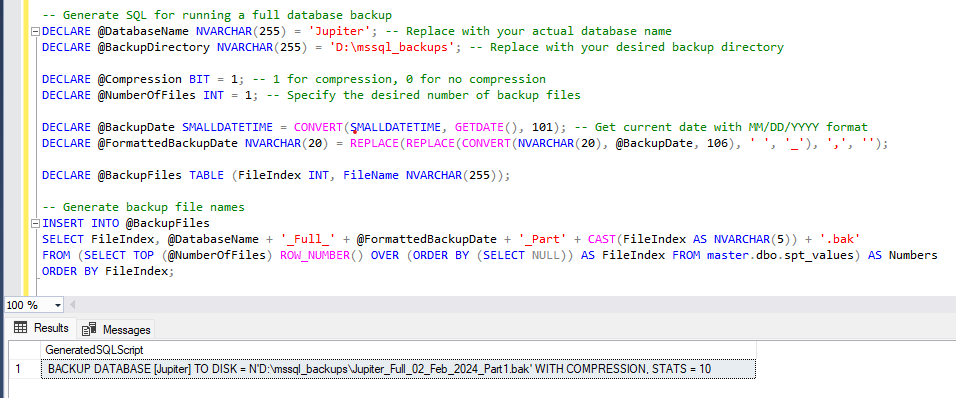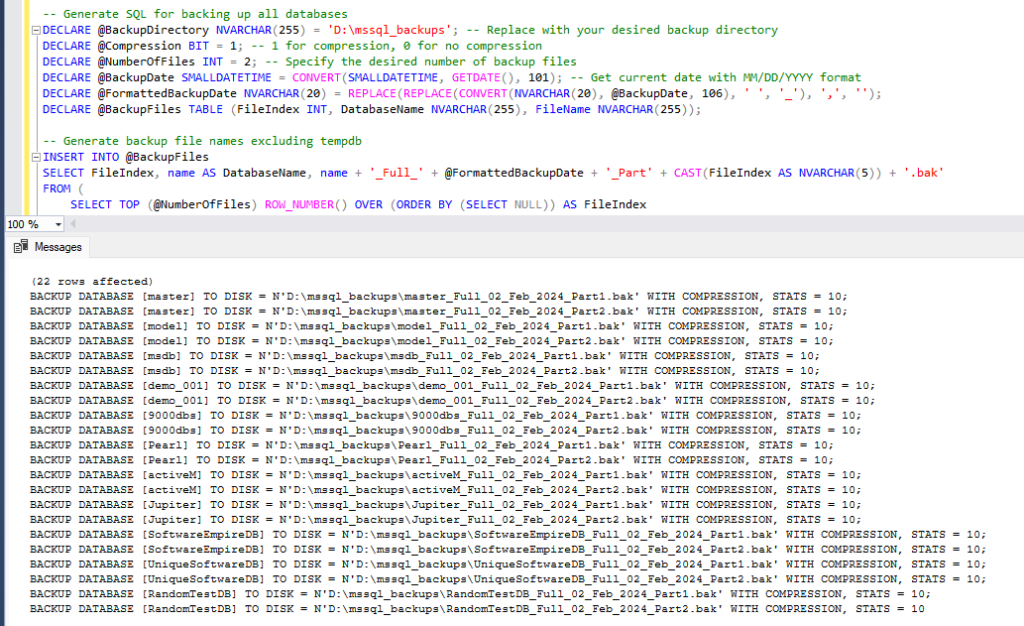Ensuring regular SQL Server backups are happening is a crucial aspect of maintaining data integrity and ensuring business continuity. In this article, we introduce two scripts designed to generate SQL commands, each catering to specific database backup scenarios:
– Generate SQL Script to Backup a Specific Database
– Generate SQL Script to Backup All Databases
– Backup Script Options & Considerations
Generate SQL to Backup a Specific Database
Let’s start with a script that generates the SQL command to back up an individual database. This proves beneficial when creating a one-time backup for a specific database, especially preceding a significant change. The script offers flexibility with parameters, allowing customization of the number of backup files (default is set to one file). Additionally, if your SQL Server version or edition lacks support for compression, you can easily adjust the corresponding parameter to zero.
Prior to executing the script below, ensure to modify the ‘DatabaseName’ and ‘BackupDirectory’ parameters according to your environment:

Run the output of the above script in a new window to perform the backup on your specified database.

Generate SQL to Backup All Databases
In scenarios where you need to backup all databases on a SQL Server Instance, excluding the system database temp db, the SQL script below comes in handy. It generates the SQL required for performing a backup of all databases, with parameters available for the backup directory and the number of files we want to split the media into (default is 2 files).

This script can be applied as a routine maintenance job to ensure a robust backup strategy, safeguarding the safety and availability of critical data.
Backup Script Options & Considerations
Optimizing Backup Performance:
Implementing the practice of splitting backup files proves invaluable for boosting performance during backups and effectively managing available disk space on the SQL Server host.
Skipping Temp DB Backups:
The MSSQL temp database, being a system database reconstructed with each SQL Server instance restart, generally doesn’t necessitate regular backups. Given its role as temporary storage space, it lacks critical user data that warrants preservation through routine backup procedures.
Understanding the COPY_ONLY Option:
Although the current backup scripts don’t utilize the COPY_ONLY option, it’s imperative to contemplate its use. Executing a full backup without the COPY_ONLY option can potentially disrupt the LSN (Log Sequence Number) chain, emphasizing the need for careful consideration.
Estimating Database Backup Time:
For a comprehensive guide on estimating database backup and restore times, refer to the following link: SQL Server Script: Estimating Database Backup and Restore Times
Checking Last Backup Dates: Gain insights into the last backup dates of your databases by running the script provided in this post: SQL Server Script: Get Last Backup Dates
